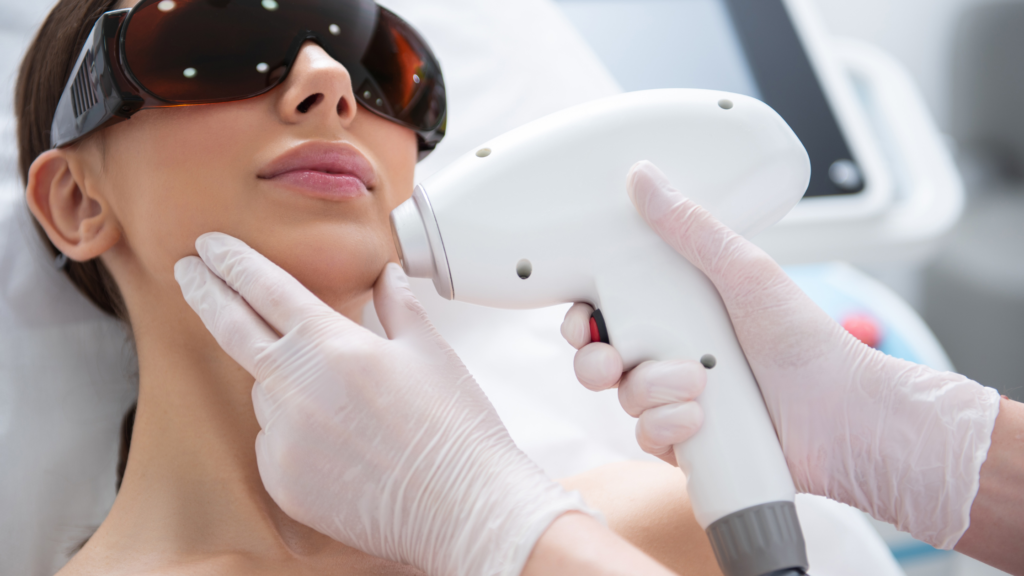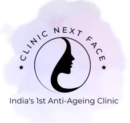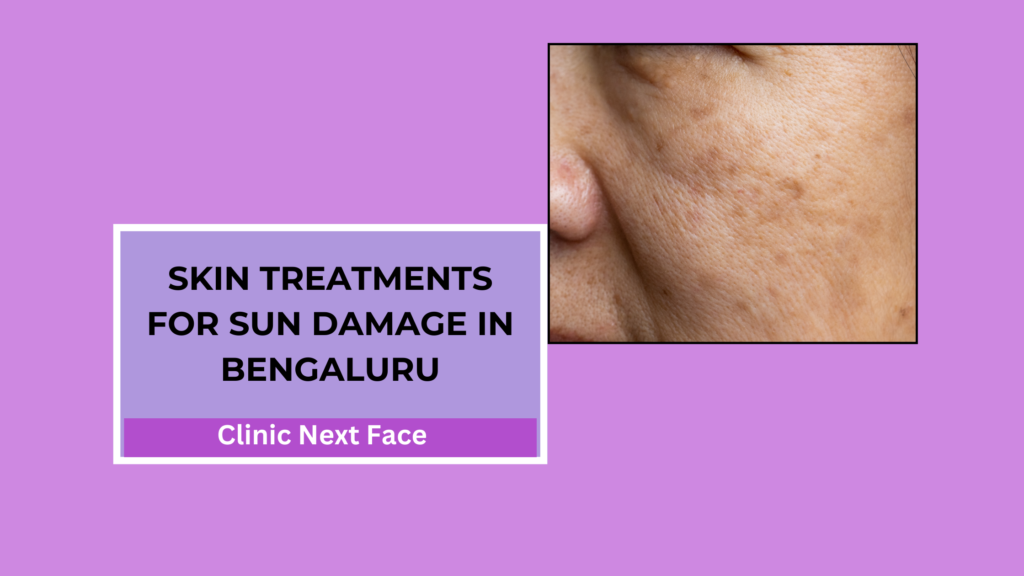TL;DR
Prevalence of Sun Damage: Approximately 90% of skin aging is attributed to sun exposure. Regular use of sunscreen with SPF 15 or higher can reduce skin aging by 24%.
Cumulative Nature of Sun Damage: Only 23% of lifetime sun exposure occurs by age 18, emphasizing the cumulative nature of sun damage. Early identification of sun damage is crucial for effective treatment.
Signs of Sun-Damaged Skin: Key indicators include hyperpigmentation, wrinkles, brown spots or freckles, melasma, blackheads, broken blood vessels, and a red neck. These signs may lead to a ruddy complexion and premature aging.
Long-Term Effects of Sun Exposure: Photoaging, characterized by pigmentation changes, wrinkles, and rough texture, is a common consequence. Actinic Keratoses, precancerous skin cell developments, can also occur due to prolonged sun exposure.
Prevention Strategies: Use sunscreen with at least SPF 15, avoid sun exposure during peak hours, use umbrellas and hats, wear protective clothing, sunglasses, and stay hydrated with adequate water intake
An estimated 90% of skin aging is caused by the sun. People who use sunscreen with an SPF of 15 or higher daily show 24% less skin aging than those who do not use sunscreen daily. Sun damage is cumulative. Only about 23% of lifetime exposure occurs by age 18.
Staying outside in the sun for a long time can damage your skin severely because of the harmful UV rays. As the sun damage builds up in your skin, you get more wrinkles, age spots, spider veins, and scaly patches (known as Actinic Keratoses, i.e., AK) which makes you look much older than your age. You get loose skin or a ruddy/blotchy complexion that becomes your aesthetic concern. Sun rays can prematurely age your skin, also known as “photoaging”, which may even cause skin cancer!
However, with our advanced treatments, you can get rid of the sun-damaged skin and get a younger-looking skin. Even though certain sun damage is permanent, our treatment can reduce the appearance of UV damage on your skin. At CNF in Bengaluru, our doctor checks your skin and suggests the right treatment to fix the sun damage and make you look better than before.
Identifying Sun Damage
As the sun causes damage to your skin, identifying them at the right time is crucial to perform the most effective treatment for curing them
Signs of Sun-Damaged Skin
Here are the key signs and symptoms of sun-damaged skin
Hyperpigmentation
Mottled or blotchy skin, dark patches, and red discoloration are common effects of sun exposure. However, they don’t signify a critical health condition. Inflamed skin may get hyperpigmented because of consistent sun exposure. The dark discoloration on your skin tends to be caused due to chronic sun damage.
Wrinkles
Most wrinkles related to aging are the outcomes of collaborative sun damage. UV rays from sun exposure may damage the elastin and collagen that keep your skin supple and firm. The chronic sun damage for years develops wrinkles on your face and other sun-exposed areas.
Brown Spots or Freckles
Your skin develops brown spots or freckles when it stays exposed to the sun for long every day. Freckles are called “ephelides” and bugger tan spots are called “solar lentigos”. They are also called “age spots”, which may coalesce and get larger brown spots.
Melasma
Melasma looks like dark patches on the sun-exposed skin of your face, mostly on your cheekbones. Skin inflammation due to chronic sun exposure may develop melasma on your skin.
Blackheads
Clustered blackheads may occur on your cheeks and temples because of decreased skin elasticity caused due to sun exposure. The elastin fiber loss enlarges the pores and crevices, which accumulate dirt and look black. This issue is also known as “Favre-Racouchot syndrome” and mostly occurs in middle-aged people experiencing heavy sun exposure.
Broken Blood Vessels
Red and spider veins around your cheeks and nose are the outcomes of UV rays exposure. They are enlarged vessels, which pump blood from one area to another and stay tight or trim, and thus, invisible. Elastin fibers, when broken by sun exposure can’t support and hold the blood vessels, which are enlarged and visible. Enlarged blood vessels tend to appear on the cheeks, nose, and chest, the body parts that get maximum sun exposure.
Red Neck
Redness on your neck’s lateral sides and central chest, a disorder called, “Poikiloderma”, occurs due to consistent sun exposure. The blood vessels on the sun-exposed skin of your chest and neck enlarge, which makes your skin look red.
Long-Term Effects of Sun Exposure
Here are the most common long-term effects of sun exposure on your skin:
Photoaging
Sunlight exposure ages your skin, mainly by damaging collagen because of different DNA and biochemical complications. The changes in your skin can be mottled pigmentation, coarse wrinkles, fine wrinkles, telangiectasia, sallowness, lentigines, and rough texture.
Actinic Keratoses
Actinic Keratoses are precancerous developments in your skin cells, also called “keratinocytes”, which tend to occur because of years of sun exposure. It may look brown, gray, red, or pink and feel scaly and rough to the touch. Seborrheic keratoses appear like actinic keratoses, which may even develop on skin not exposed to sun and aren’t precancerous.
Prevention Strategies for Sun-Damaged Skin
Here are the prevention measures you can take to protect your skin from sun damage:
Apply Sunscreen On the Exposed Body Parts
Sunscreens containing an SPF of at least 15 can block UV rays from entering your skin. So, you should apply a sunscreen of minimum SPF 15 on your face and other exposed body parts. Check if the product has a broad spectrum specified on the label as it ensures to protect your skin from UVA and UVB rays. UVA penetrates deep inside your skin and tends to cause premature aging and even skin cancer. UVB rays attack the skin’s surface and cause sunburn.
Avoid Sun Exposure
Elude go outside during the daytime if you want to protect your skin from the harshest UV sun rays. Try not to participate in outdoor activities during the summer from 10 AM to 3 PM.
Use an Umbrella
A sturdy shade over your head is crucial to protect your skin from sun damage. Use an umbrella or any other form of shelter when you step outside in the sun. Ensure to apply SPF on your skin and wear covered clothes to protect your skin against sun damage even when you carry an umbrella.
Put on a Hat
Wear a hat to cover your face, ears, and neck backside for maximum sun protection. Choose a darker hat that offers higher UV protection. Besides a hat, you should try to wear clothes covering your ears and neck.
Wear Proper Clothes
Full pants and long-sleeved shirts made of tightly woven fabrics can add maximum protection to your skin against harmful sun rays. A darker-coloured shirt gives more sun protection than lighter-coloured ones. As a normal t-shirt has an SPF of less than 15, try to wear internationally certified clothes, mainly manufactured for UV protection.
Cover Your Eyes With Sunglasses
Sunglasses can protect your eyes and the surrounding soft skin from harmful sun rays and prevent the occurrence of cataracts. Sunglasses capable of blocking UVA and UVB rays offer maximum sun protection. You can also wear wrap-around sunglasses as they block UV sun rays entering your skin.
Drink Enough Water
You should drink at least 3 to 4 liters of water every day. Drinking enough water keeps your body hydrated, which detoxifies your skin and prevents severe sun damage
Professional Skin Treatments
Here are the professional treatments you can do at our clinic in Bengaluru
Chemical Peels

Chemical peels can cure your sun-damaged skin by applying a chemical solution to remove your skin’s outer layer. As the peeling starts, it reveals a new skin that looks smoother with the reduced visibility of wrinkles, fine lines and other blemishes caused due to sun damage. You may experience side effects, such as permanent/temporary changes in skin color, scars, swelling and cold sores reactivation. Repeating light peels at an interval of 1 to 4 weeks and medium-depth peels after every 6 to 12 months can deliver you the desired results.
Laser Therapy

Laser therapy is a safe and non-invasive treatment that repairs sun-damaged skin and regenerates cells. This treatment involves applying a low-grade laser to your sun-damaged skin, which passes photos approximately 3 inches inside your skin. Mitochondria absorb the red laser beam, which increases the level of adenosine triphosphate and produces more healthy cells. The treatment also boosts collagen production, which prevents the formation of scar tissues. The treated area may look red or pink for 4 to 8 hours post the treatment. You may experience a mild stinging sensation, which settles in 4 to 6 hours. The mild swelling you experience may subside in many days.
Microdermabrasion

Microdermabrasion is a quick and non-invasive treatment to fix sun-damaged skin by exfoliating the epidermis top layer. As your damaged skin gets removed by exfoliation, it reveals healthier and newer cells. This treatment restores the natural youthful charm in your skin by reducing the appearance of wrinkles, fine lines, melasma and sun spots. The microdermabrasion process takes 30 to 60 minutes. You may experience mild swelling, redness, peeling, flaking and irritation, which subside in 48 to 72 hours. Apply ointments and creams on the treated areas for 2 to 4 days after the session.
Dermapen Microneedling

Dermapen microneedling is an effective treatment to reduce the appearance of sun damage in your skin. The Dermapem device creates thousands of fractional microchannels in a second on the superficial skin top layer with mini needles to boost the rejuvenation process.
Since the Dermapen targetly directs melanocytes and boost collagen production, the repairing process gives you an even, rejuvenated and radiant skin tone. The application of active solutions, containing antioxidants, vitamins, collagen and other ingredients penetrates your skin’s deeper layer via such mini channels to deliver better results. The total number of required sessions depends on the level of sun damage to your skin. 3 to 6 sessions at an interval of 2 to 4 weeks are recommended for excellent results. Your skin texture will improve with the reduced appearance of sunspots.
Natural and Home Remedies for Sun-Damaged Skin
Here are the natural and home remedies that you can try to cure your sun-damaged skin:
Aloe Vera
Apply pure aloe vera gel on your face and other body parts, which get maximum sun exposure. As aloe vera has healing and soothing properties, it helps in controlling inflammation and subside redness.
Green Tea
Apply brewed green tea to your skin with a cotton pad. Since green tea has antioxidant properties, it helps in protecting your skin from harmful sun damage.
Cucumber
Put cucumber slices in the sun-damaged areas. Cucumber with its high water content can calm and hydrate your skin. Being an anti-inflammatory agent, it can also control the puffiness in your skin and shrink the large pores, which start secreting less oil.
Coconut Oil
Coconut oil has SPF properties, thus always can protect your skin against the sun. So, apply coconut oil on your skin in moderate quantities before stepping outside in the sun to keep the skin moisturized and protect it against the sun. Plus, coconut oil contains antimicrobial properties which can cure acne and protect your skin against bacteria.
Vitamin E
Vitamin E is an effective anti-inflammatory agent and prevents the inflammatory damage caused in the skin after sun exposure. It can cure edema, erythema, UV-induced skin thickness, and swelling. Being rich in antioxidants, it can always control sunburns and free radical damage.
Sign Up for a Free Consultation
Are you looking for the best treatment to treat your sun-damaged skin? You should get an advanced treatment in our clinic in Bengaluru. Sign up for a free consultation now. Our doctor will check your skin condition and suggest the right treatment to fix your skin concern.
Talk To Our Mewing Expert Today!
No Obligations! Just jump on a quick call with our Mewing expert and know what kind of treatment will suit you the best.
Either way you will get some actionable tips to reach your skin goals faster.








